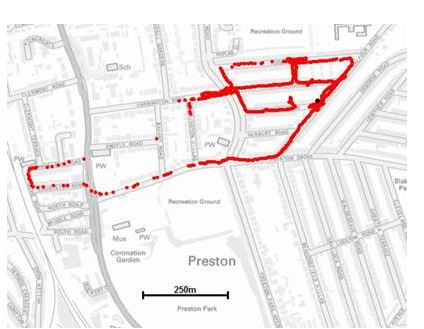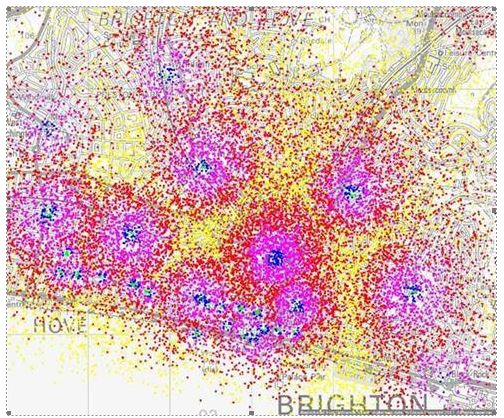We undertook a number of modelling studies for Ofcom in 2014-2015, to inform their policy on technical conditions relating to the release of 700 MHz broadcast spectrum for mobile use. The most likely band-plan involved the user equipment (UE) handsets transmitting at frequencies immediately above the remaining broadcast allocation, with base stations assigned spectrum higher in the band. This implied that the most significant interference path would be likely to be from UE devices in the street (at a height of around 1.5m) to rooftop TV aerials at 10m above ground.
Modelling based on, say, degradation of the TV receiver noise floor would give very pessimistic results, as a considerable increase in noise could be allowed in areas where the wanted DTT signal is strong. The modelling therefore incorporated predictions of the wanted DTT field strength in each 100m pixel across the UK, as well as a statistical assessment of the power likely to be coupled to a rooftop antenna from mobile handsets. The prediction model, which applied Monte Carlo methods, was written in C++.
Because no existing propagation models give statistics appropriate for the UHF path from street level to rooftop height, a limited series of measurements was undertaken to determine the statistics of overall coupling loss between a UE in the street and the DTT receiver input, including the impact of the domestic TV aerial and cabling. Measurements were made using a custom-designed test transmitter that replicated the mobile UE. This radiated a signal in the 700 MHz band, modulated with a signal giving the instantaneous GPS position. Inside each test house, the signal was measured using a calibrated receiver and the demodulated GPS position logged at 1 second intervals. This allowed the statistics of path loss with distance to be determined for a selection of typical UK environments. The data from these trials was then incorporated in the statistical modelling.

Figure above shows street measurements made around domestic TV antenna location (red dots show potentially-interfering received power levels).
Below are predictions of median UE (user equipment) radiated power, taking power control and hypothetical base station locations into account.

